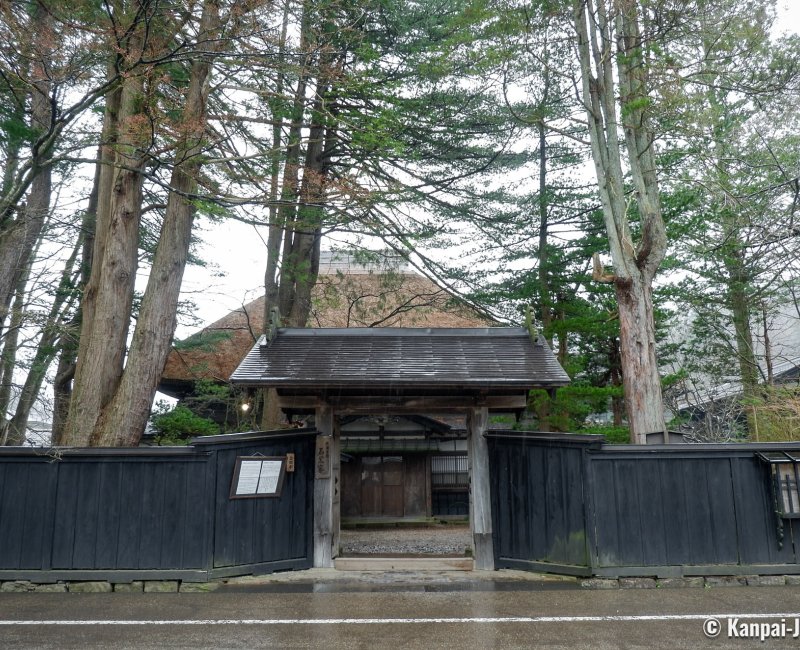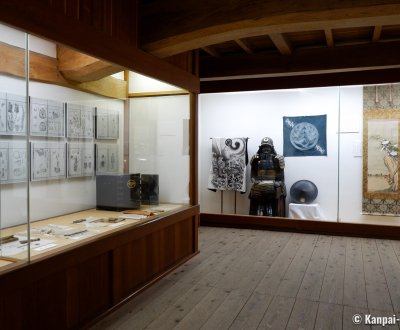Ishiguro Samurai House
The Oldest Samurai House in Kakunodate
Ishiguro Samurai House is a former warrior family residence located in the Bukeyashiki district of Kakunodate, in Akita prefecture. The mansion has a few rooms opened to visitors, who can also discover 19th century warriors traditions and occupations in a small museum.
A little bit further north to its neighbor the Aoyagi-ke Residence, the Ishiguro Samurai House, built in 1809, is the oldest of the Bukeyashiki-dori district and of Kakunodate. The descendants of the Ishiguros’ are still living on the premises, so only a few rooms, the garden and a warehouse converted into an exhibition hall are opened to the visit.
Impressive several-centuries old trees, including a shidare-zakura weeping cherry tree 🌸, are growing tall behind a palisade hiding the garden from the street. The only entrance to the estate is a wooden gate, covered by a simple roof.

A thatched roof covers the main house in the style common to the region’s dwellings. The genkan entryway, with an earthen floor, is the first step into the house. When "coming up" in the house, taking shoes off is required before being allowed in the handful of rooms. Inside, the floor is covered in pristine tatamis mats, and rooms are arranged according to circumstances through movable partitions, such as opaque fusuma sliding doors or semi-transparent shoji. A few spaces nonetheless have dedicated functions:
- Nakama, a kind of vestibule between the genkan and the rest of the house;
- Zashiki, a small reception room characterized by a tokonoma alcove;
- The "office" of the master of the house; and,
- 2 daidokoro living areas, one of which is smaller and isolated, with an irori open hearth, intended for the family use.
The interior is spacious and elegant, with a play on the contrast between the clear windows and the darker shade of the wooden structure. On a fine weather day, the shoji sliding screens are stowed on the side to create an unobstructed view on the garden.

A small museum of life in Kakunodate
As the tour continues, a large hall displays various objects in relation to the Edo period samurai lifestyle and life in Kakunodate: miscellaneous items, from military equipment to the Ishiguro family’s coat of arms, an explanation of the thatched roof building process and ancient documents. Exhibits are tuned to the seasons, and displays vary regularly to show beautiful dolls and figures collections for Hina Matsuri 🎎 and Kodomo no Hi, as well as kimonos.
The Ishiguros’ were the domain’s accountants, but they also dabbled in medicine, as shown by their collections of prints from the anatomy treatise Kaitai Shinsho, and in painting, specifically in the Akita Ranga style, inspired by the Western arts that were known the archipelago at the times.
While not a must-see, Ishiguro Samurai House is an integral part of the exploration of the Bukeyashiki-dori neighborhood and offers a glimpse on the lifestyle of a wealthy warrior family on the eve of Japan’s opening to the world.

